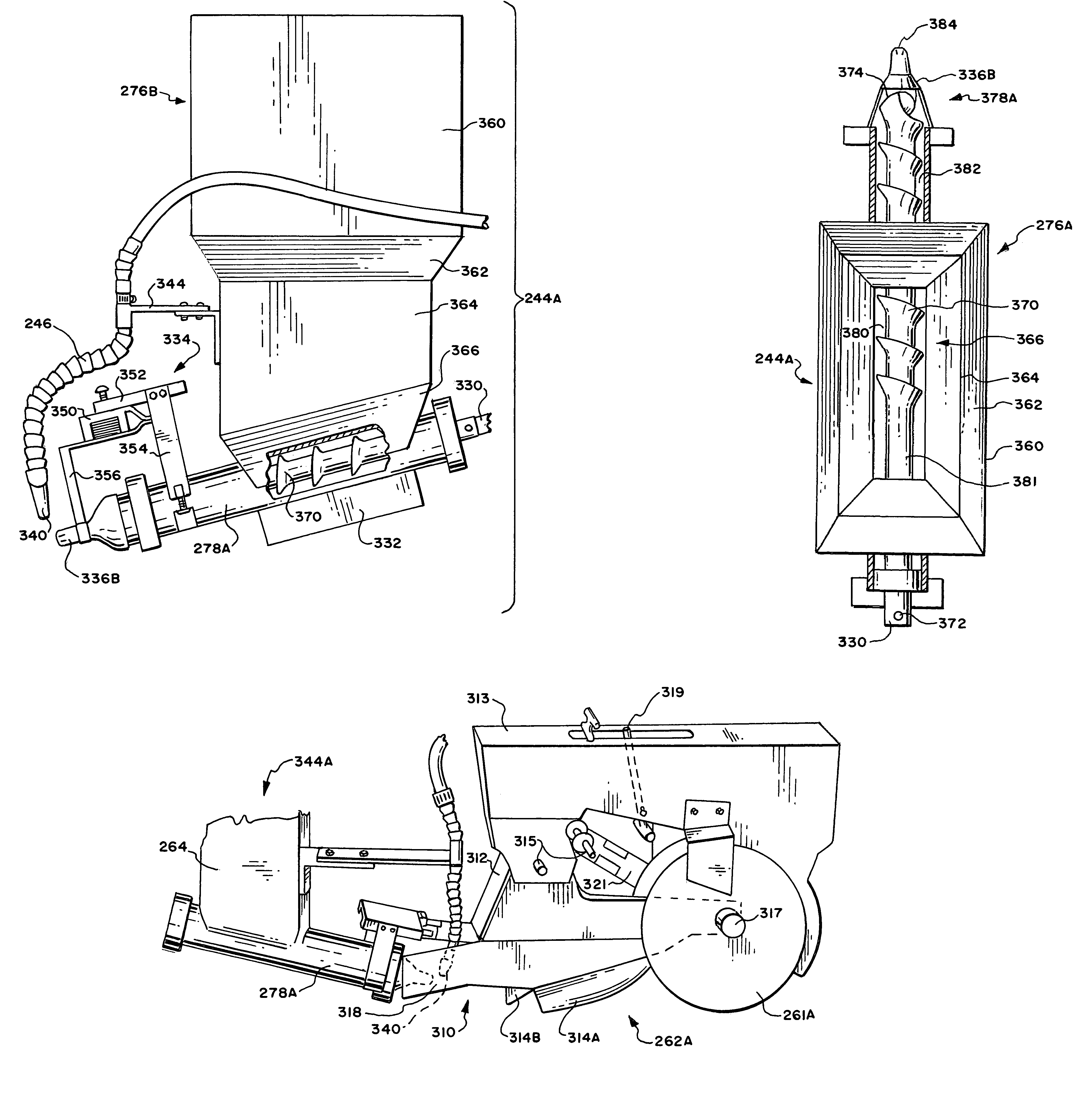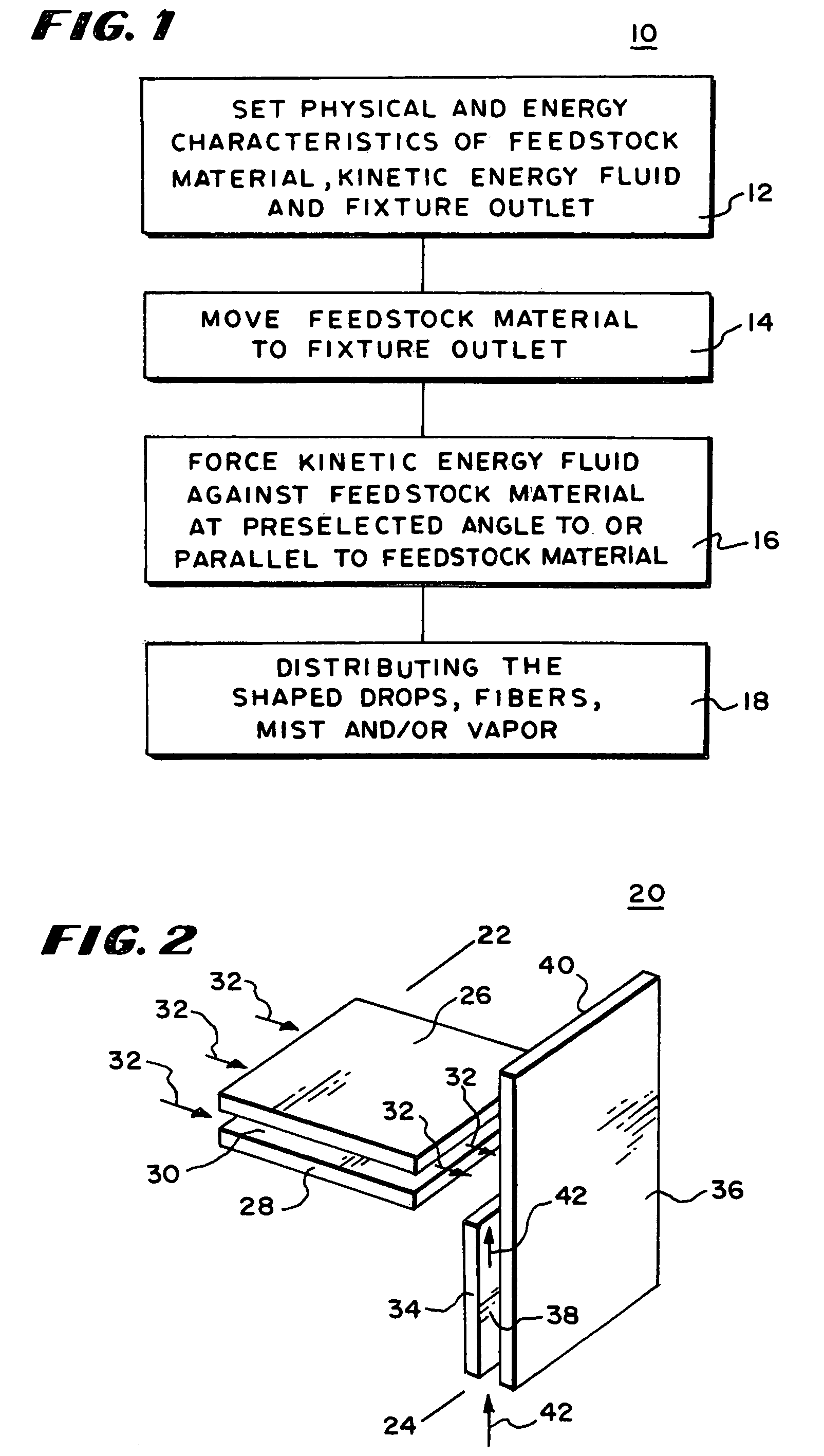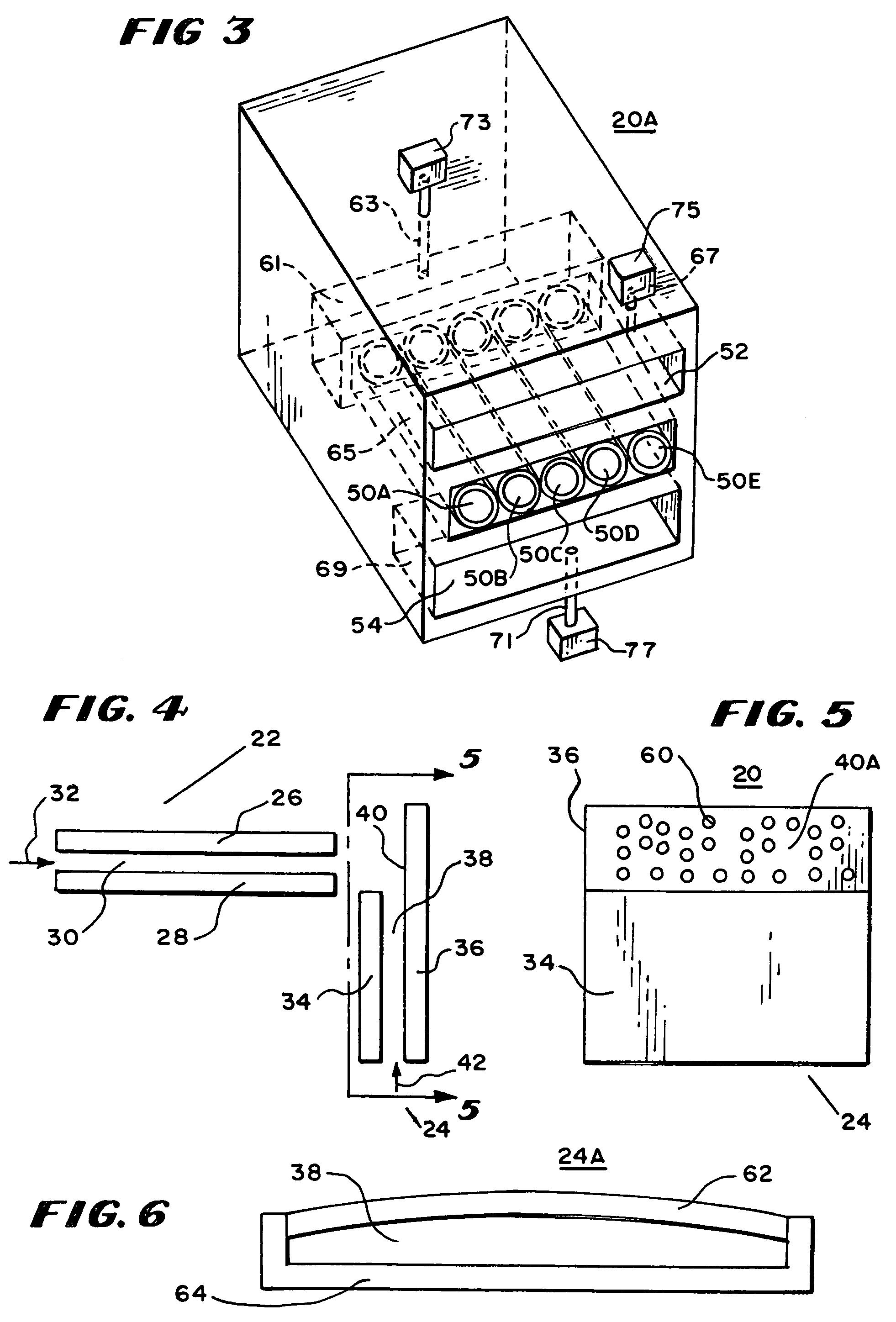Under some circumstances, vehicles used to spray agricultural fields carry large volumes of diluted active ingredients because it is difficult to spray more concentrated forms of the
active ingredient.
The prior art spray apparatuses have several disadvantages such as for example: (1) they require vehicles carrying the agricultural inputs to carry heavier weights of agricultural inputs with the associated water carrier than desirable; (2) they require the replenishment of the supply of agricultural inputs carried by the spray vehicles periodically, thus increasing the time and expense of spraying; (3) they cannot be used for the application of some beneficial microbes because the microbes are killed by the
high pressure used in the prior art techniques for application of agricultural inputs; (4) the low
viscosity agricultural inputs drift when sprayed; (5) some of the carriers used for
dilution, such as water, have
high surface tension and form beads on contact rather than spreading such as over a leaf; (6) the sprayed drops tend to break up because of lowered
shear resistance, thus forming smaller drops that are subject to increased drift; (7) some of the carriers used for
dilution, such as water, have unpredictable mineral content and pH variations; (8) the angle of the cone of sprayed fluid from the nozzles is small thus requiring the
nozzle to be positioned at a
high elevation to obtain adequate coverage but the
high elevation increases drift; (9) the use of some carriers for
dilution in some circumstances causes
precipitation of active ingredients and (10) the prior art systems cannot effectively spray some particles such as particles that have absorbed active ingredients in them that are to be released at a later time or over a timed interval.
This type of spraying apparatus has not generally been adapted for use in spraying agricultural inputs.
Moreover, the known spraying apparatus for spraying viscous materials is not readily adjustable for different size droplets or particles or
viscosity of the droplets and is not equipped with a convenient mechanism to adjust
drop size or pattern or
viscosity of the drops in the field as appropriate and thus reduce drift by conveniently adjusting
drop size and viscosity in accordance with circumstances such as
wind speed, height of spraying or speed such as for example by ground vehicle or
airplane.
The prior techniques for forming nanofibers have disadvantages in that they are not suitable for forming nanofibers of viscous fluids because the
electric potential to adequately draw the viscous fluid is close to the break down potential of air and the
system causes
corona discharge before the fibers can be formed.
Other difficulties with putting chitosan in solution are
toxicity of some solutions.
While chitosan has long been known to form viscous gels in carboxylic acids such as acetic, formic, and
ascorbic acid, as well as in mineral acids, it is not soluble in either water or basic solutions.
In addition, all organic solvents—with the notable exception of a 3 to 1 mixture of dimethyleformamide and
dinitrogen tetroxide, and some
fluorine-containing solvents, which are both costly and toxic—are also unable to dissolve chitosan regardless of its degree of deacetylation (DA).
However, with the method described in U.S. Pat. No. 6,695,992, only relatively short fibers have been obtained and at times the fibers stick to one another When attempts have been made to keep the fibers separate by
magneto dynamic force the fibers stuck to each other rather than being kept separate.
However, the use of
carbon dioxide was to dissolve the chitosan—not to remove acid and there is no suggestion of using
carbon dioxide to remove the acid.
These apparatuses have a tendency to distribute seeds with irregular and poorly controlled spacing between the seeds and under some circumstances damage seeds.
Moreover, they are prone to plugging from the accumulation of seeds in tubes used in the apparatus.
Because the tube-seed ratio must be so large, adequate flow for fluid drilling of large seeds requires inordinate amounts of fluid and very large pumps to get the seeds delivered.
The same limitations apply to
piston or air displacement systems.
These disadvantages limit the flexibility of the current fluid drilling hardware for delivering large seeds and for using smaller quantities of gel to reduce gel cost per acre.
Further, this ratio limitation impacts on the use of optimal concentrations of treatment chemicals or microorganisms in gels while still being able to use low total amounts of treatment per acre through using for example, gel to seed ratios of 1 to 1.
Thus the
physics of dispensing seeds suspended in non-Newtonian fluids imposes strict limitations on the utility of the current commercial fluid drilling hardware.
This approach has not entirely solved the problem in a satisfactory manner.
This apparatus has a
disadvantage of damaging seeds and being relatively complicated and unreliable.
Augers are known for conveying matter from place to place but such augers have not been successfully adapted up to now to fluid drilling apparatuses.
However, this patent does not disclose any method of fluid drilling.
The augers used in the prior art are not designed in a manner adequate to separate seeds, to avoid plugging of the conduits carrying the seeds and gel to the
nozzle from which they are to be expelled into the ground nor to maintain spacing between seeds while moving them along the
auger.
The prior art planting shoes have a
disadvantage when used for fluid drilling in that there is insufficient space to permit accurate deposit of gel and seeds at a location protected by the shoe.
These apparatuses have a disadvantage in that they waste expensive additives by applying them nonuniformly and at locations where they are not needed.
Attempts to innoculate seeds with beneficial microorganisms have not been as successful as desired.
 Login to View More
Login to View More 


